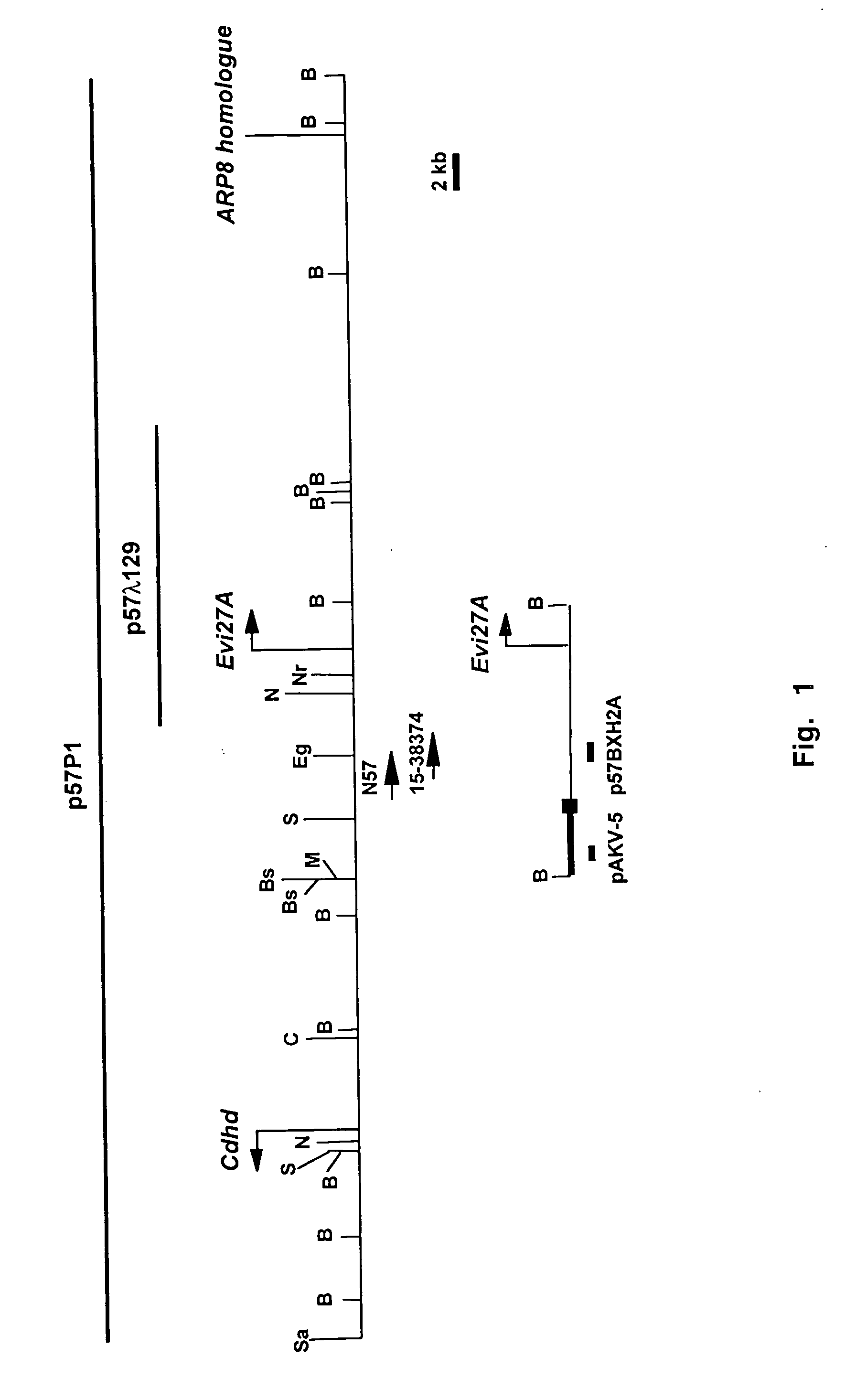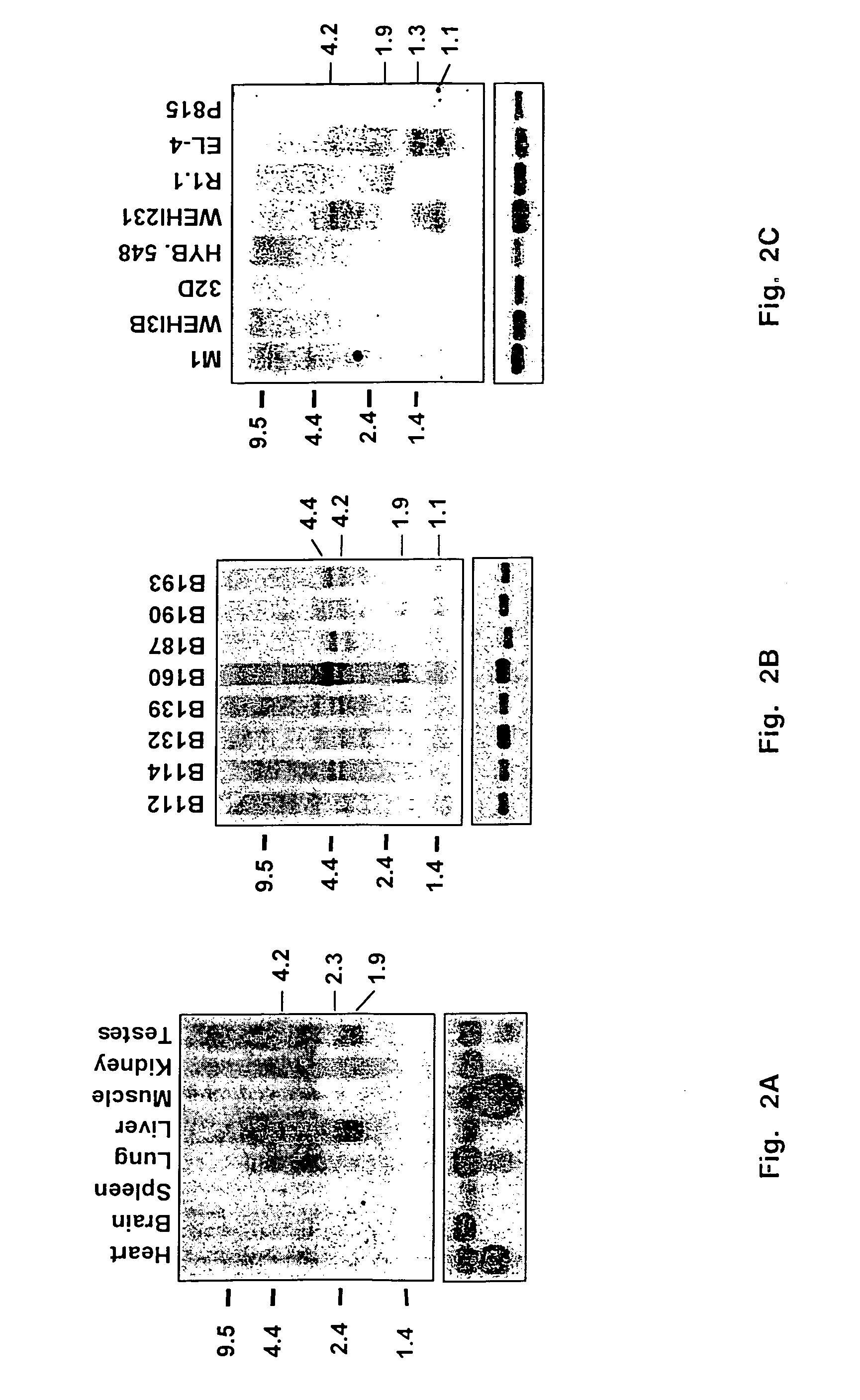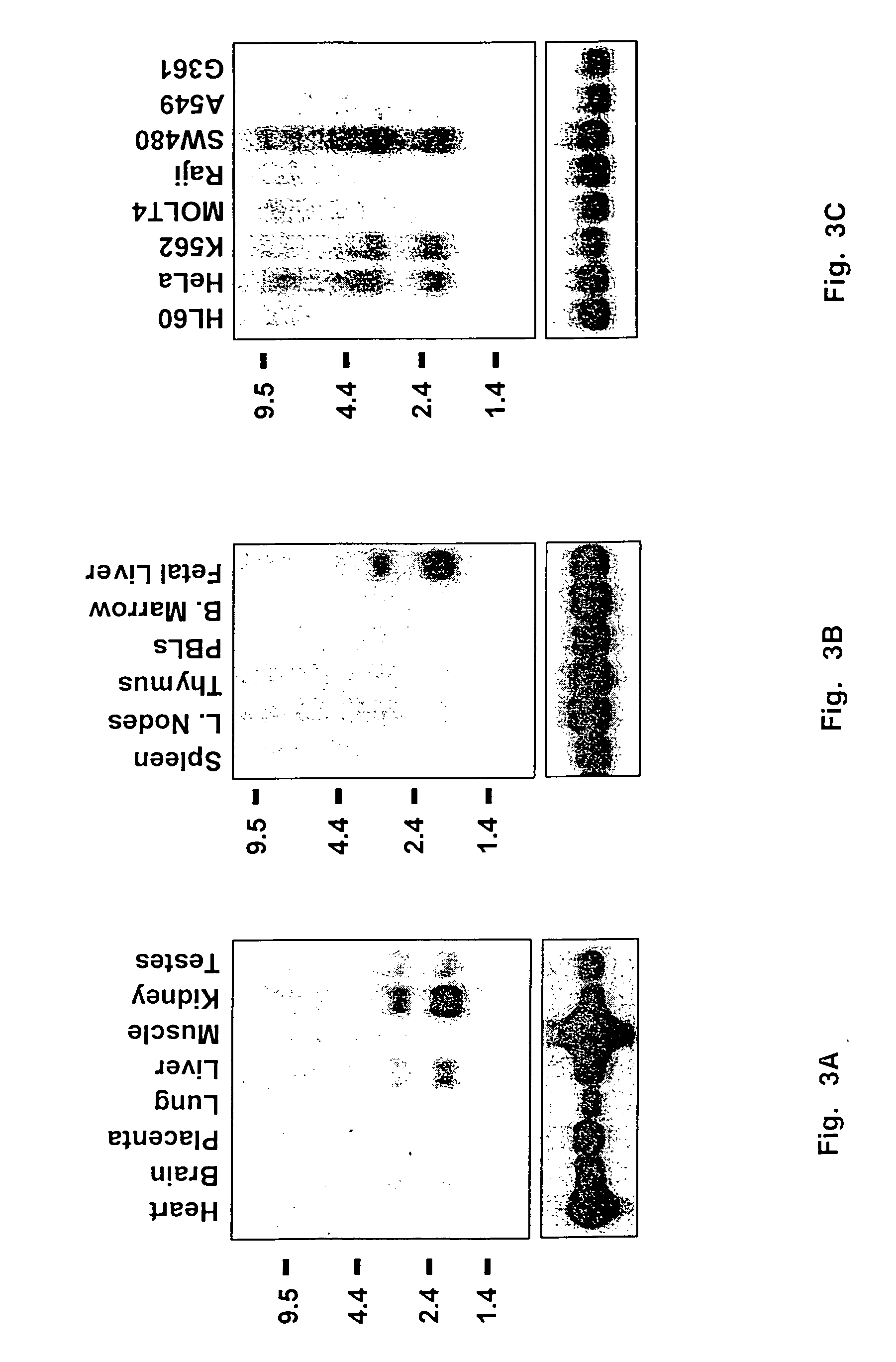EV127 gene sequences and protein encoded thereby
a technology of ev127 and protein, applied in the field of molecular biology, can solve problems such as difficulty in task
- Summary
- Abstract
- Description
- Claims
- Application Information
AI Technical Summary
Problems solved by technology
Method used
Image
Examples
example 1
BXH2 Mice and Leukemic Cell Lines
[0054] The BXH2 recombinant inbred strain was obtained from the Jackson Laboratory (Bar Harbor, Me.) and maintained at the NCI-Frederick Cancer Research and Development Center. BXH2 leukemia cell lines have been previously described (Largaespada et al., 1995). Other cell lines were purchased from the ATCC and grown in either RPMI 1640 or DMEM supplemented with 2 mM glutamine, 4.5 g / L glucose, Pen-Strep, and 10% fetal bovine serum (Atlanta Biologicals, Atlanta Ga.).
example 2
DNA Extraction and Southern Blot Hybridization
[0055] High molecular weight genomic DNAs were extracted from frozen normal tissues and leukemic spleens and lymph nodes as previously described (Jenkins et al., 1982). Bacteriophage and plasmid DNAs were purified using standard procedures (Sambrook et al., 1987). Restriction enzyme digestions, agarose gel electrophoresis, Southern blot transfers, hybridizations, and washes were performed as previously described (Sambrook et al., 1987).
example 3
Genomic Cloning
[0056] 70 mg of DNA from leukemia N57 was digested to completion with BamHI and fractionated by electrophoresis in TAE buffer. Fragments approximating the somatically acquired pAKV5 (ecotropic murine leukemia virus) hybridizing fragments were cut from the gel and purified using Qiaex beads according to the manufacturer's instructions (Qiagen, Valencia, Calif.). The BamHI fragments were cloned into EMBL4 phage arms (Stratagene, La Jolla, Calif.). Ligated material was packaged with Gigapack Gold packaging extracts (Stratagene, La Jolla, Calif.). Library screening was performed according to the protocol of Benton and Davis (1977). The P1 and lambda genomic clones were derived from commercial libraries (Genome Systems, St. Louis, Mo., Clontech, Palo Alto, Calif.).
PUM
| Property | Measurement | Unit |
|---|---|---|
| pH | aaaaa | aaaaa |
| pH | aaaaa | aaaaa |
| concentration | aaaaa | aaaaa |
Abstract
Description
Claims
Application Information
 Login to View More
Login to View More - R&D
- Intellectual Property
- Life Sciences
- Materials
- Tech Scout
- Unparalleled Data Quality
- Higher Quality Content
- 60% Fewer Hallucinations
Browse by: Latest US Patents, China's latest patents, Technical Efficacy Thesaurus, Application Domain, Technology Topic, Popular Technical Reports.
© 2025 PatSnap. All rights reserved.Legal|Privacy policy|Modern Slavery Act Transparency Statement|Sitemap|About US| Contact US: help@patsnap.com



